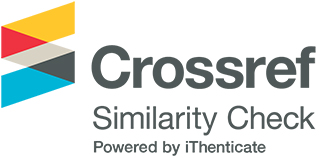Enhancing Sustainable Blue Economy Strategies: A Comprehensive Analysis of the Baltic Sea Region's Policy, Practices, and Innovations
DOI:
https://doi.org/10.33422/ijarme.v8i1.1477Keywords:
EUSBSR, Sustainable Blue Economy, Macro-Regional Strategies, Baltic Sea Region, DenmarkAbstract
The sustainable blue economy in the Baltic Sea Region (BSR) has become a focal point for balancing economic growth with environmental stewardship. Originating from the broader concept of sustainable development, the blue economy emphasizes the sustainable use of marine resources to drive economic and social progress. This research investigates the key challenges and opportunities faced by the blue economy in the BSR and assesses the effectiveness of the European Union Strategy for the Baltic Sea Region (EUSBSR) in addressing these issues. Challenges in the BSR's blue economy include environmental degradation, technological integration, and the need for coordinated governance across national borders. The region also faces sector-specific challenges such as the decarbonization of maritime transport, sustainable coastal tourism, and the expansion of aquaculture within environmental limits. However, there are significant opportunities as well, particularly in leveraging technological advancements, fostering innovation, and exporting successful blue economy practices globally. To provide a concrete example, the research includes a case study of Denmark's approach to the blue economy. Denmark has made significant strides in offshore wind energy, sustainable fisheries, and maritime innovation, showcasing how targeted national strategies can align with broader regional goals. The Danish case highlights both the successes and ongoing challenges in achieving sustainable blue growth, offering valuable lessons for other BSR countries. The EUSBSR, launched in 2009, has played a pivotal role in fostering regional cooperation and promoting sustainable blue growth. Through initiatives such as Maritime Spatial Planning (MSP) and targeted funding programs, the strategy has addressed some of the critical challenges, particularly in improving governance and encouraging sustainable practices. However, the effectiveness of the EUSBSR in fully realizing the potential of the blue economy remains contingent on further integration of policies, enhanced stakeholder engagement, and continued innovation. The conclusion will discuss the pathways for optimizing the blue economy in the BSR, focusing on strategic recommendations for overcoming existing challenges and capitalizing on emerging opportunities, with insights drawn from the Danish experience.
Downloads
Published
Issue
Section
License
Copyright (c) 2025 Anna Zaccaro

This work is licensed under a Creative Commons Attribution 4.0 International License.













